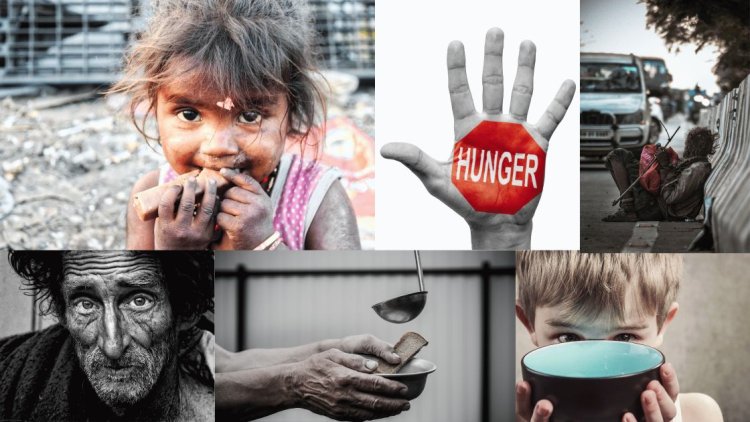Did you know that over 800 million people around world are currently facing hunger?
Check the causes, impacts, and ways to address this global crisis. Together, we can make a change and ensure a world without hunger.

Over 800 million people are currently experiencing hunger, marking the highest number in over a decade, which accounts for approximately 10 percent of the global population.
According to the Food and Agriculture Organization (FAO) of the United Nations, approximately 828 million people, which is equivalent to 10 percent of the global population, experience hunger and go to bed without enough food each night. This represents an increase of 46 million individuals compared to the previous year.
Around two-thirds of the individuals affected by hunger are women, and approximately 80 percent of them reside in regions that are vulnerable to the impacts of climate change. In order to bring attention to the issue of global hunger, the non-profit organization called The Hunger Project has designated May 28 as World Hunger Day.
Hunger is a debilitating condition that arises when the body experiences prolonged food deprivation. It can give rise to a range of health issues and result in lasting physical and cognitive impairments, particularly in children. Undernutrition encompasses more than just insufficient calorie intake; it also signifies deficiencies in essential nutrients such as energy, protein, vitamins, and minerals.
After a decade of steady decline, global hunger has experienced a notable reversal in recent years. Between 2019 and 2021, the population of undernourished individuals grew by over 150 million, primarily driven by factors such as conflicts, climate change, economic shocks, and the COVID-19 pandemic.
Between 2019 and 2022, the FAO Food Price Index (FPI), which gauges changes in the global prices of various food items like sugar, meat, cereals, dairy, and vegetable oil, rose from 95.1 points to 143.7 points. Monika Tothova, an economist in the FAO Trade and Markets division, highlights that although food commodity prices increased globally, the magnitude of increase varied across countries due to diverse policy approaches.
Some countries implement consumer subsidies for specific products, ensuring price stability for consumers and shielding them from market fluctuations, but this comes at the cost of national budgets.
The recent SOFI report from the United Nations revealed that Asia is home to the largest population of undernourished individuals, with approximately 425 million people experiencing hunger in 2021. However, the highest prevalence of hunger is observed in Africa, where 278 million individuals were affected during the same year.
The Global Report on Food Crisis of 2023 indicates that the number of people facing acute food shortages, which poses immediate threats to their lives and livelihoods, has increased for the fourth consecutive year in 2022. A staggering 258 million people are now grappling with acute hunger.
According to Tothova, economic shocks have surpassed conflicts as the primary catalyst for acute food insecurity and malnutrition in several major food crises. The cumulative impact of global economic shocks, including surging food prices and significant market disruptions, undermines the resilience and ability of countries to address food-related challenges.
In 2022, the conflict between Russia and Ukraine, two major producers of staple cereals, oilseeds, and fertilizers, caused significant disruptions to international supply chains. As a result, grain, fertilizer, and energy prices surged, leading to the highest recorded level of the global Food Price Index (FPI) in 2022.
What's Your Reaction?
 Like
1
Like
1
 Dislike
0
Dislike
0
 Love
0
Love
0
 Funny
0
Funny
0
 Angry
0
Angry
0
 Sad
0
Sad
0
 Wow
0
Wow
0







































































































